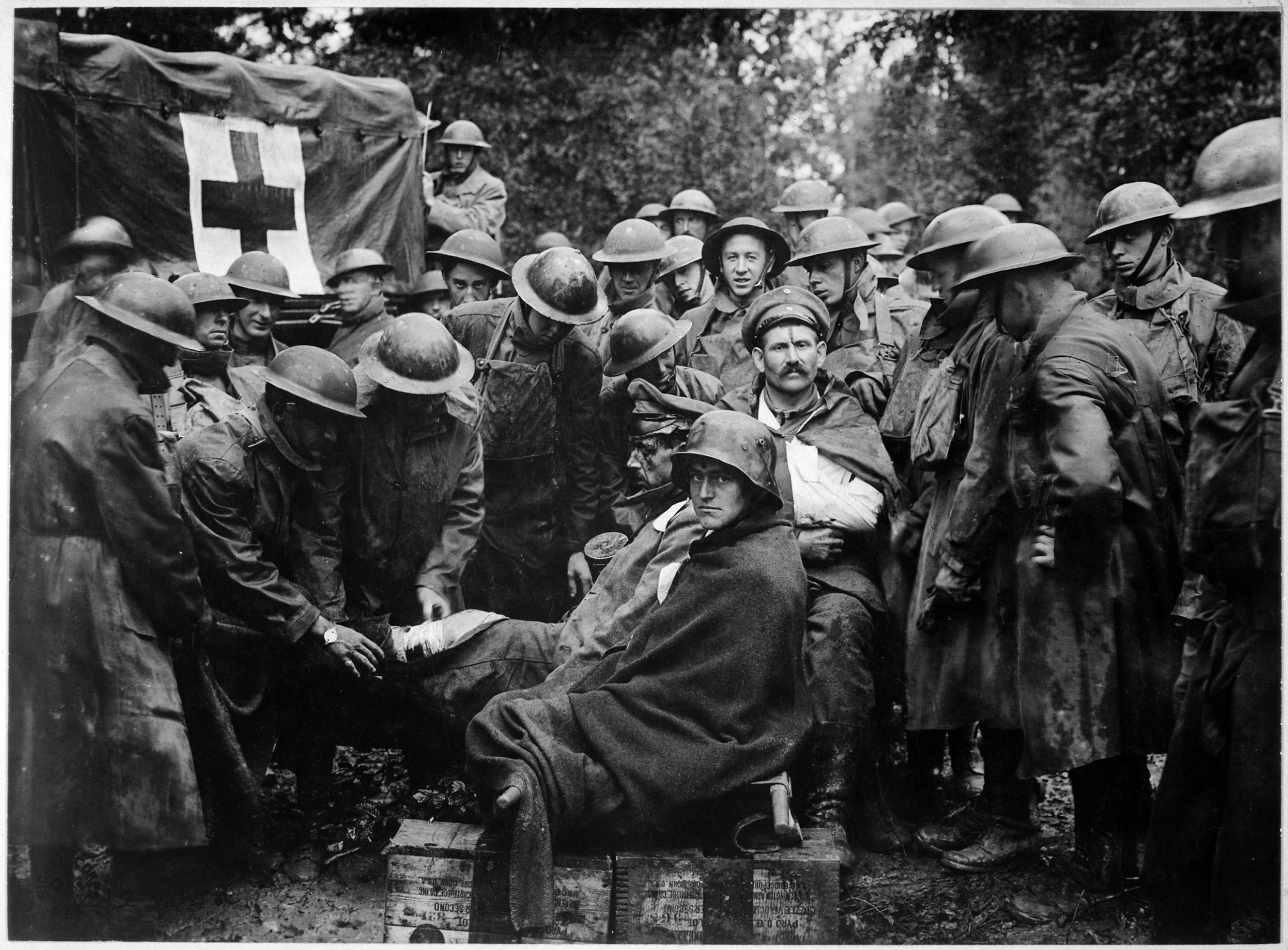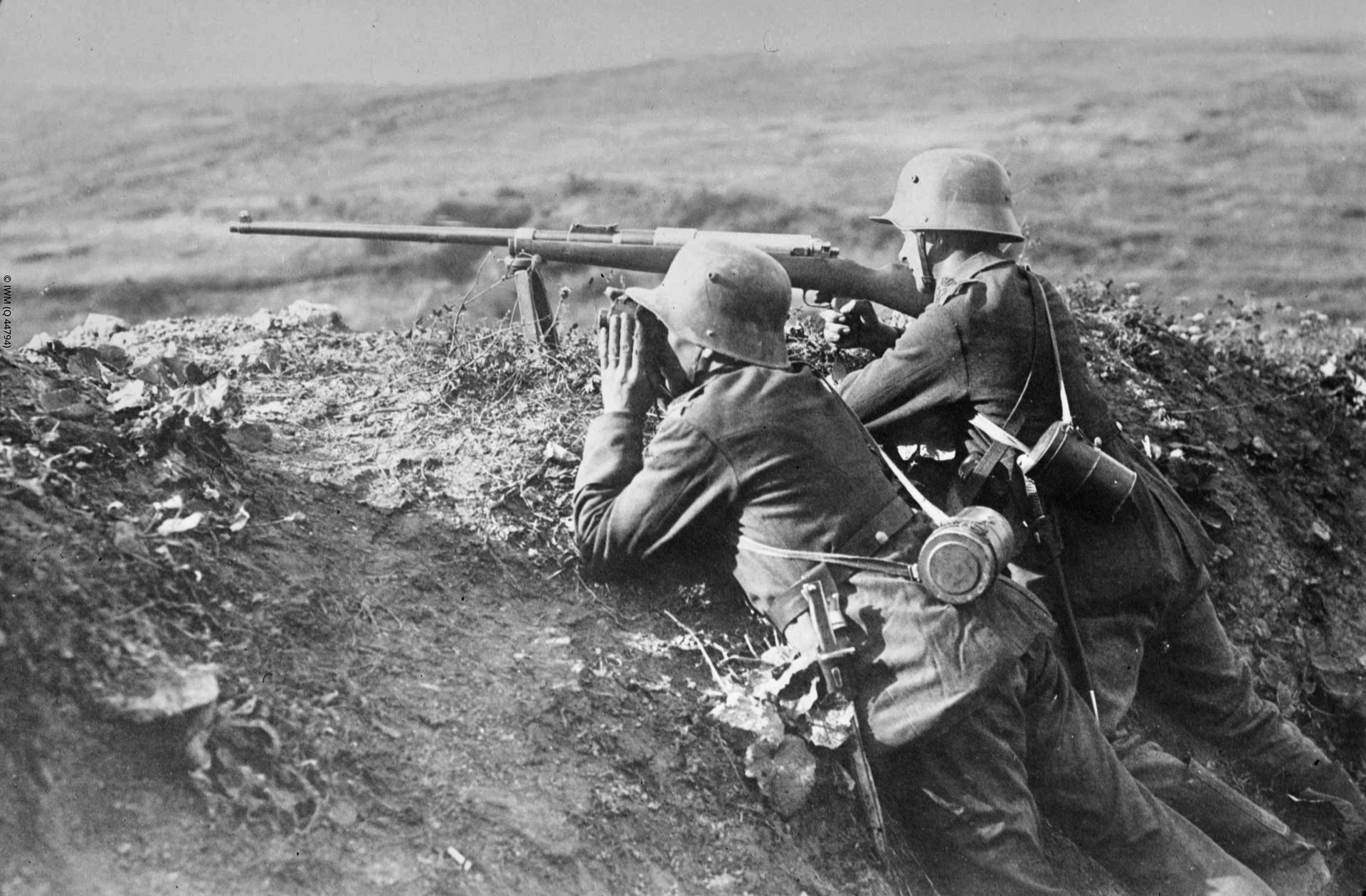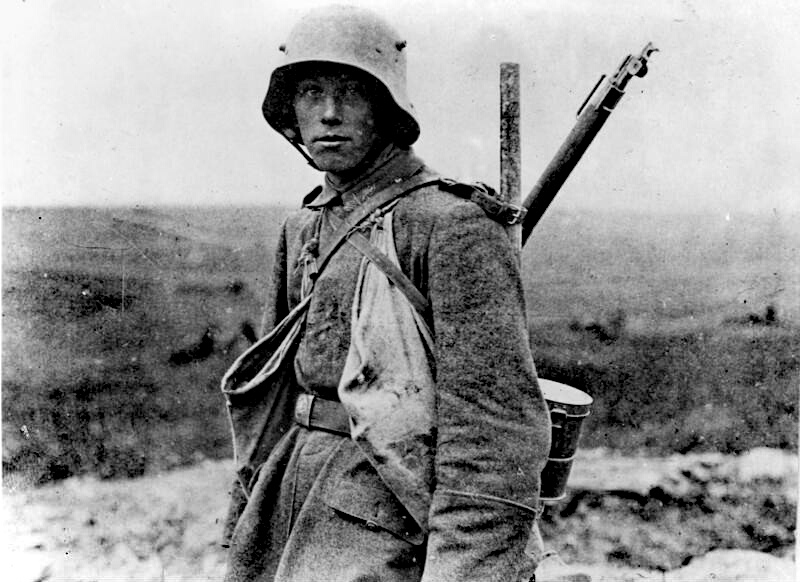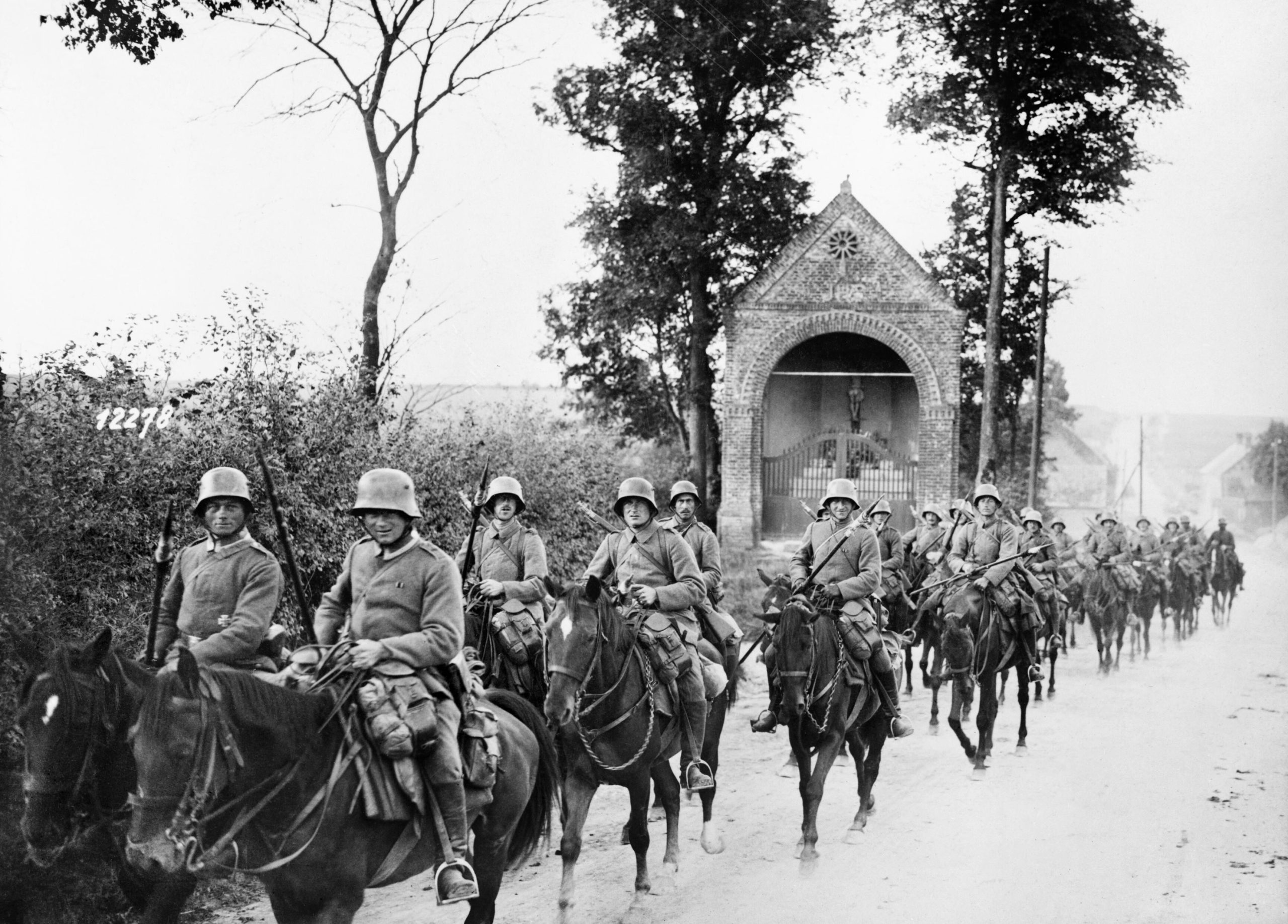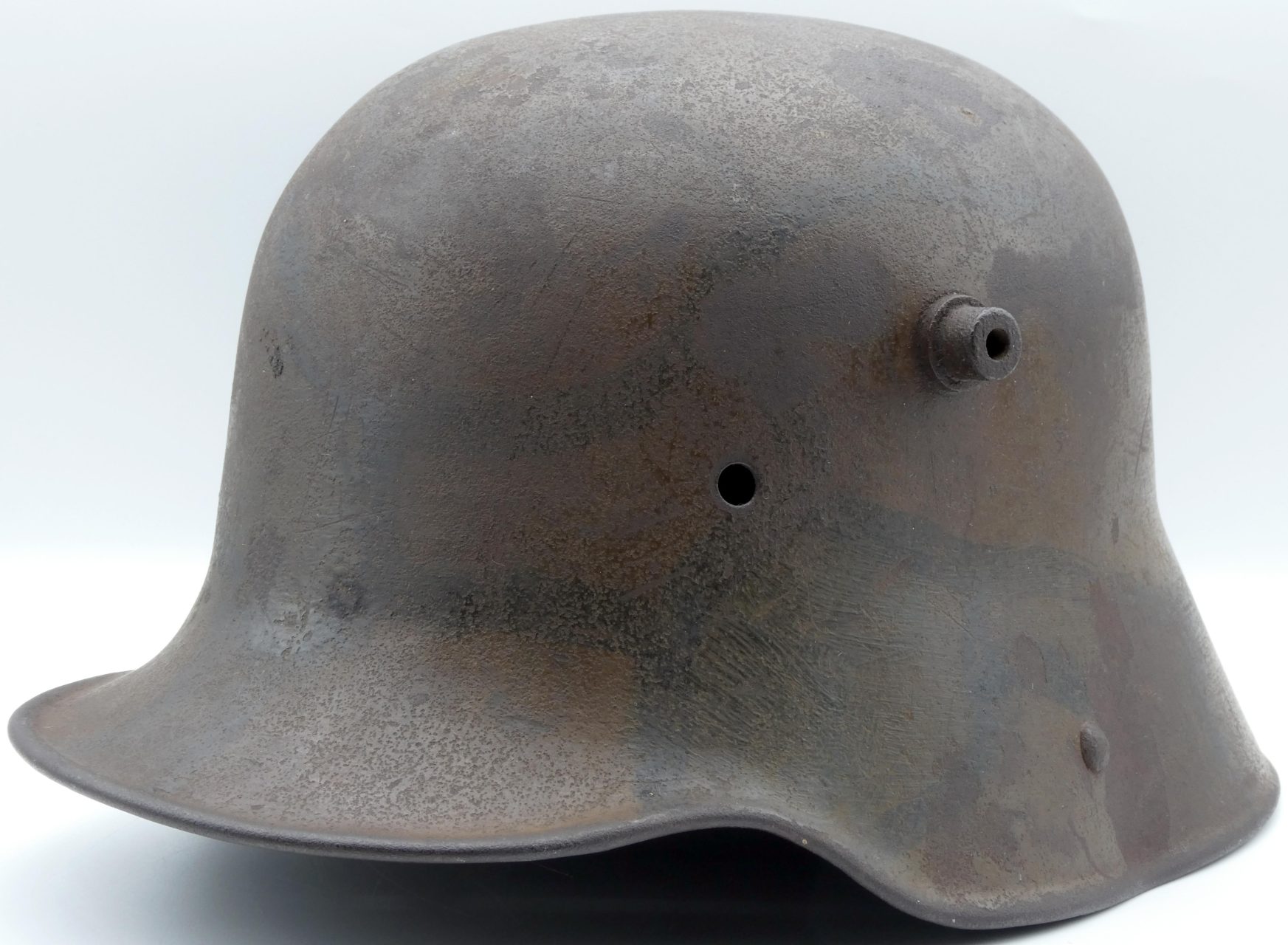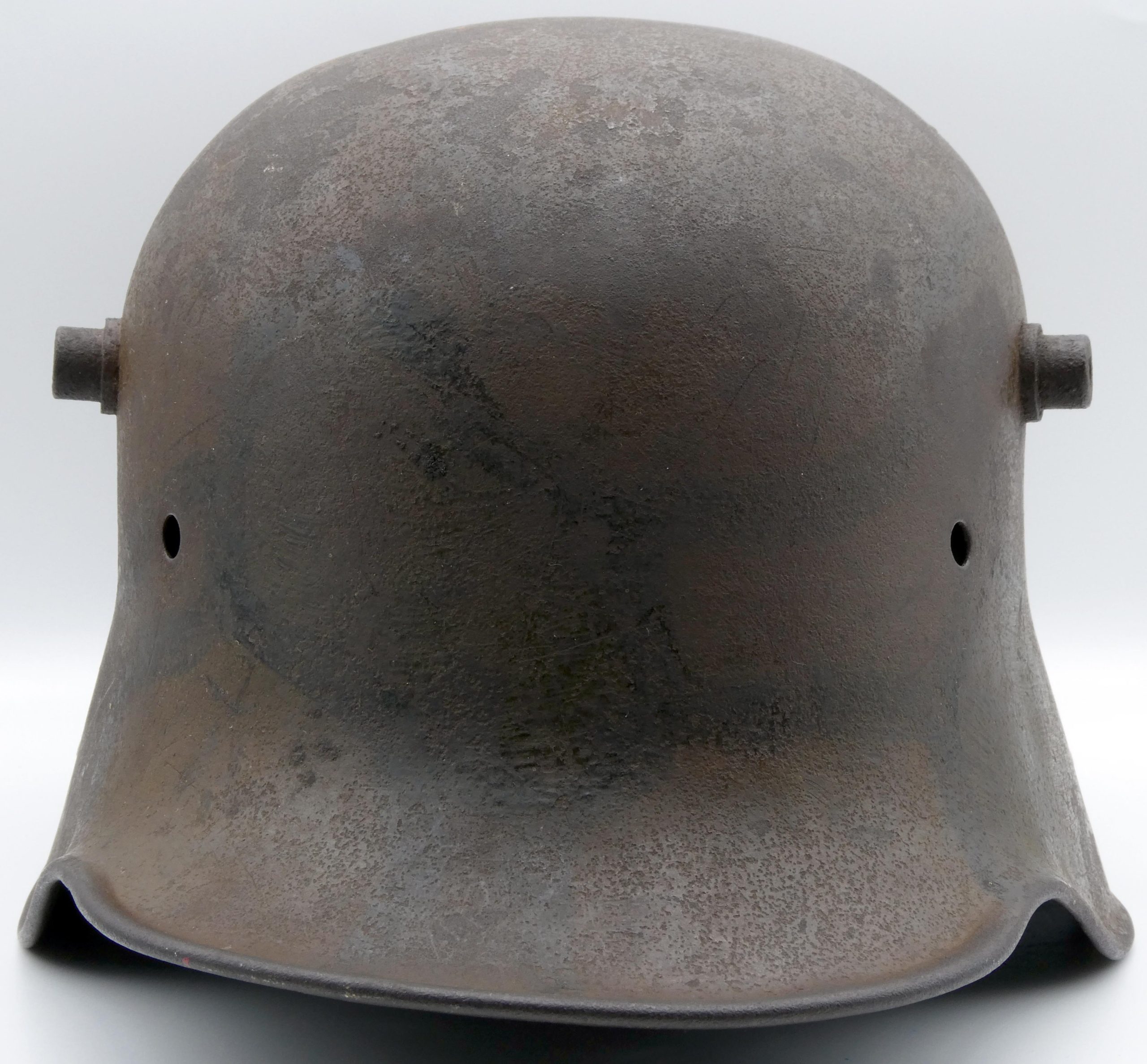
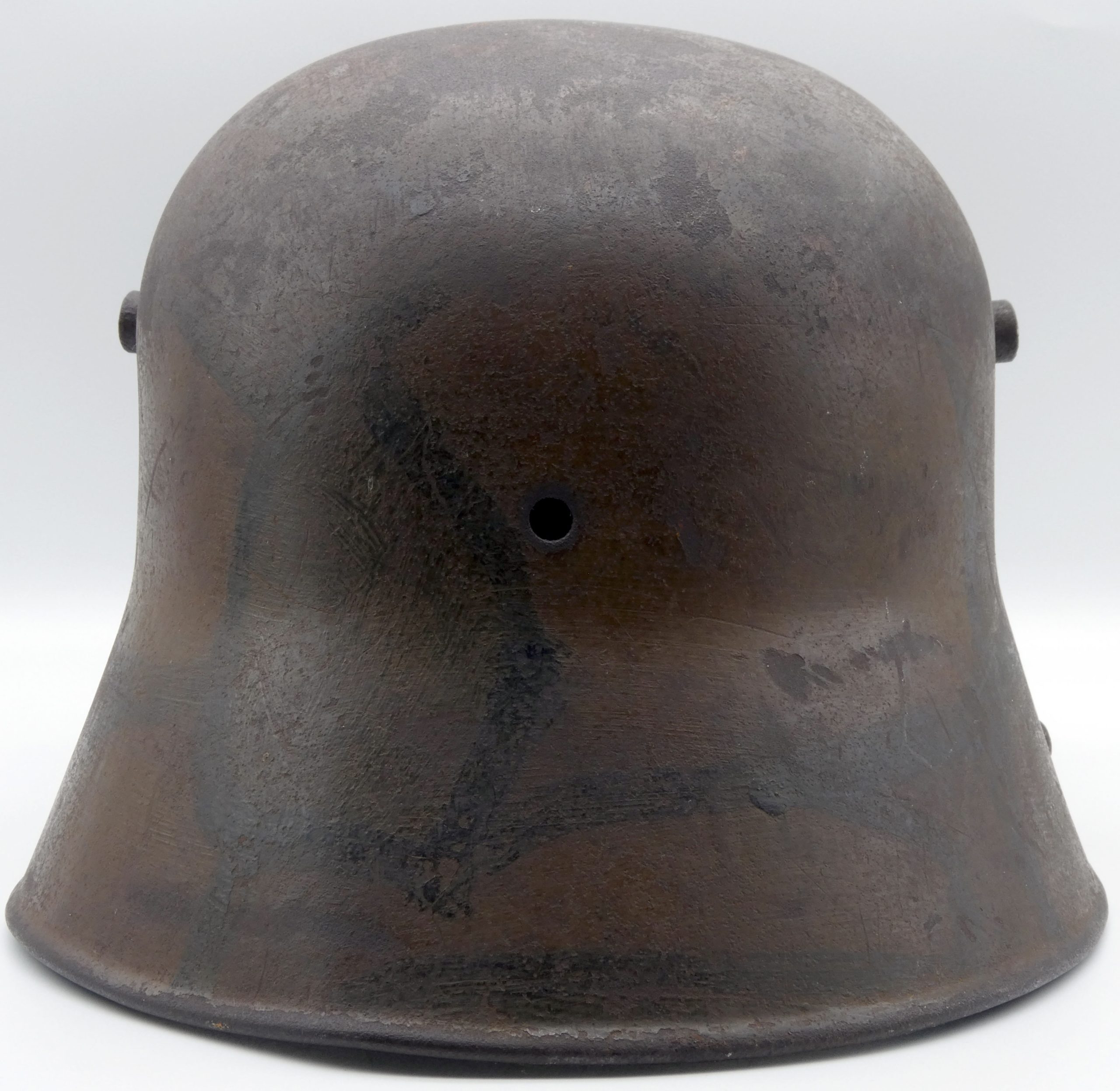
Imperial Germany first issued the Stalhelm in 1916, two years into World War 1, to reduce the amount of head injuries from explosives in trench warfare, replacing the Pickelhaube made from boiled leather that had little protective value against shrapnel [1][2]. The Stahlhelm’s distinctive shape, with a skirt protecting the sides and back of the head, at the cost of peripheral vision and reduced hearing capability for the wearer, became a symbol of German militarism throughout the 20th Century since Germany reused the design throughout the two World Wars [3]. Stahlhelms were made from martensitic silicon/nickel steel, harder than the manganese (Hadfield) steel used on British helmets [4], but requiring a higher production cost per unit [3].
Sides:
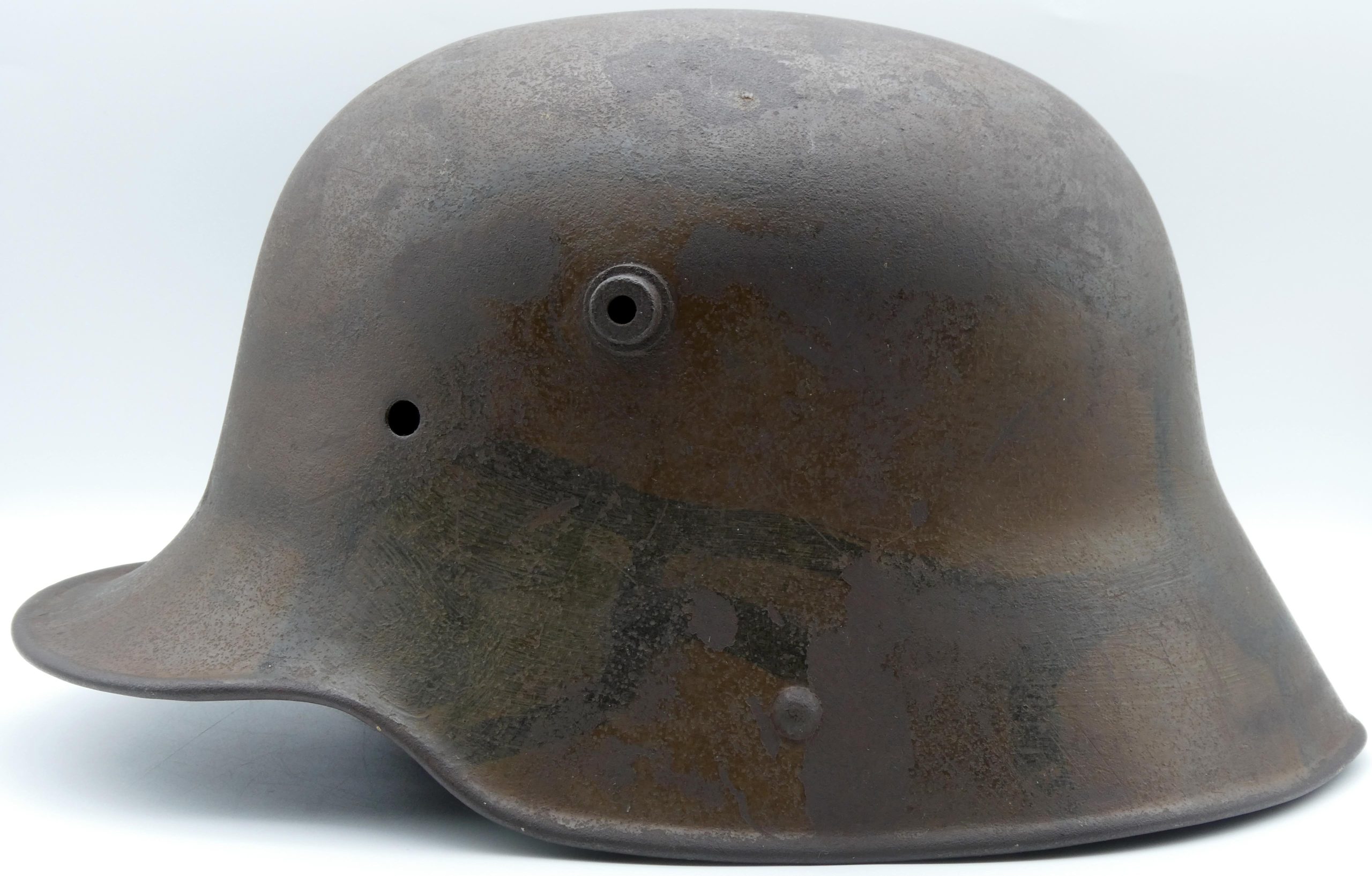
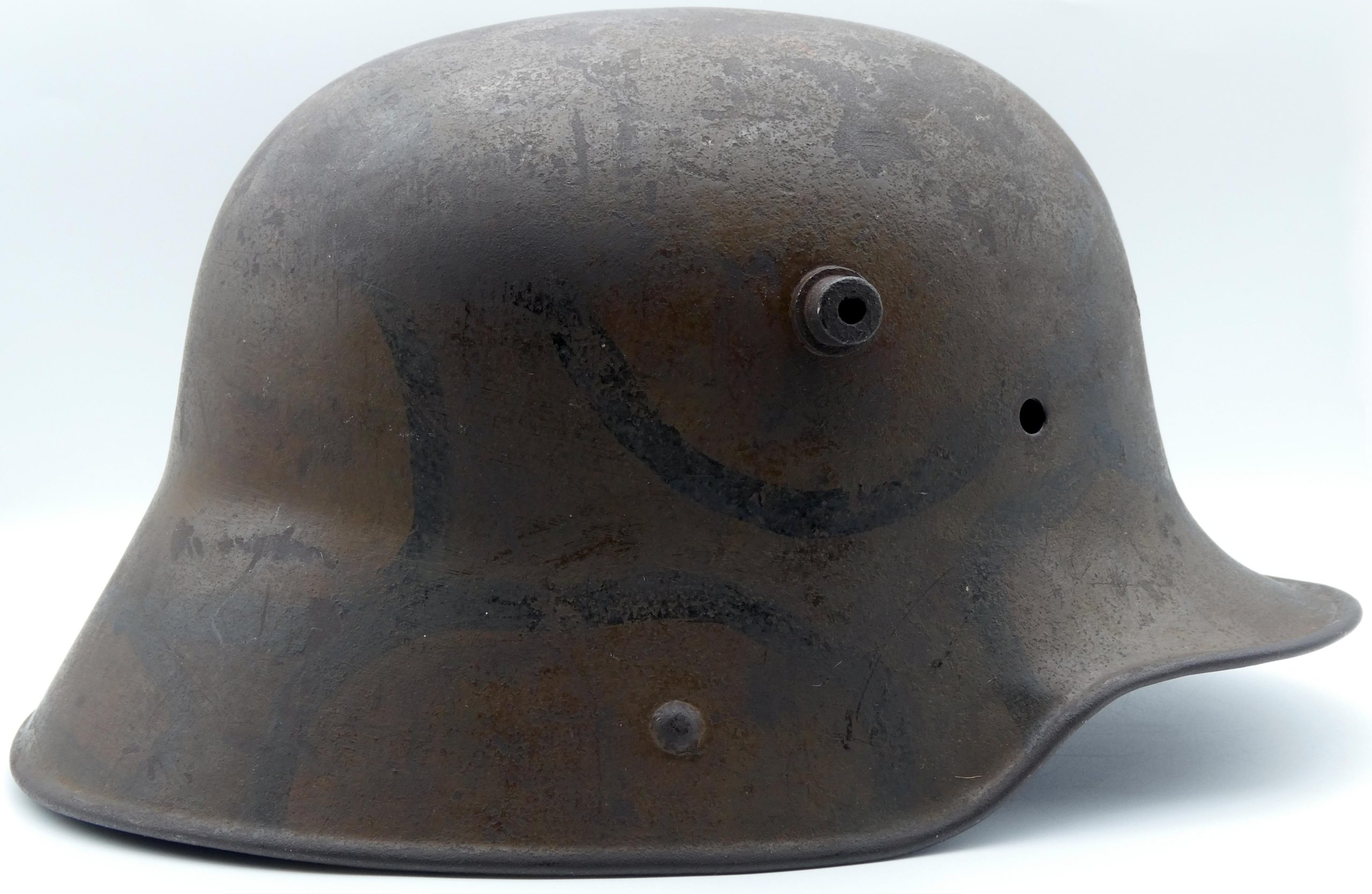
Top:
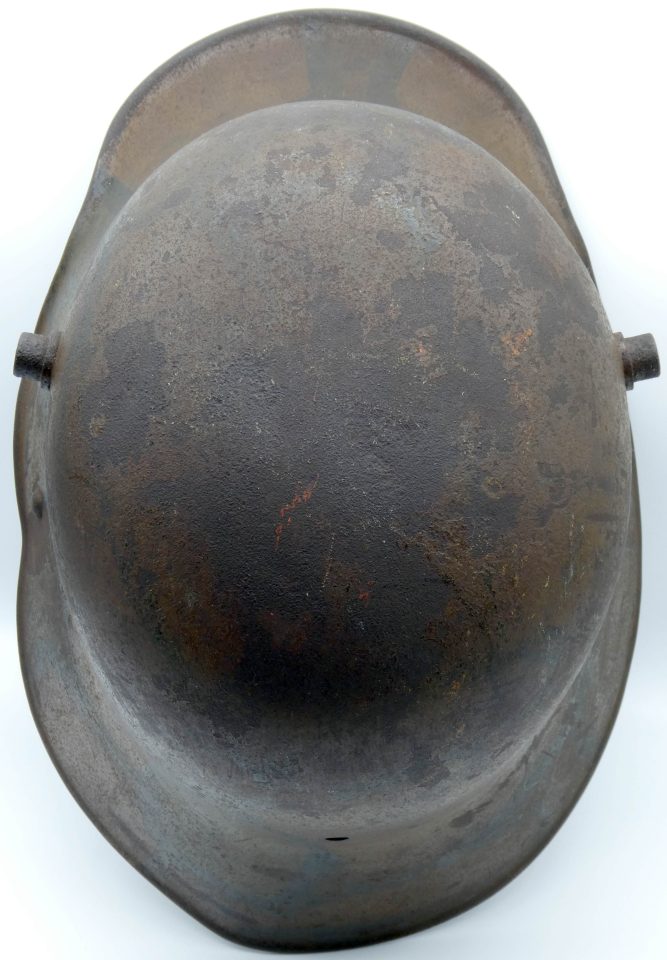
Helmet skirt is slightly deformed.
Inside:
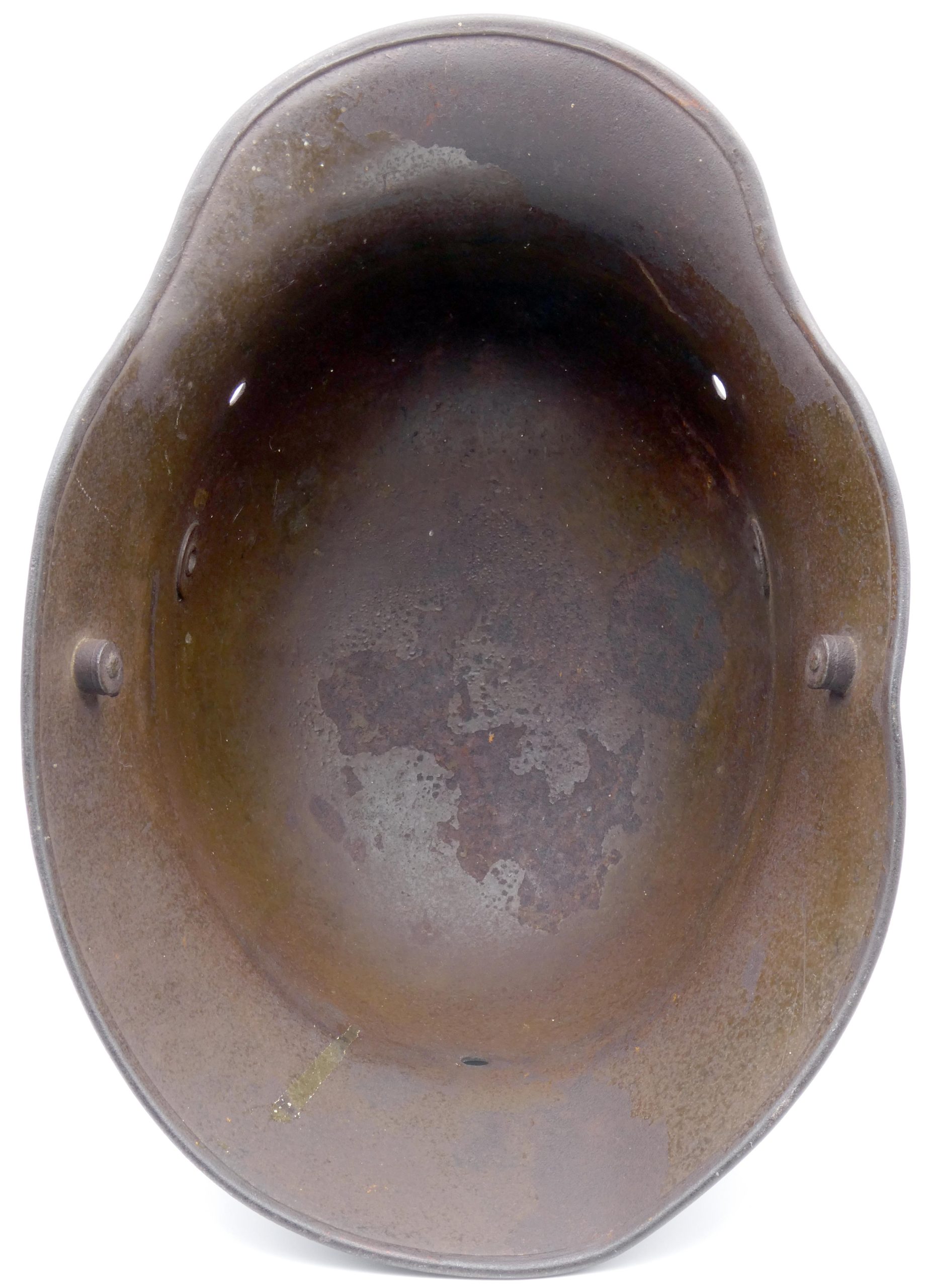
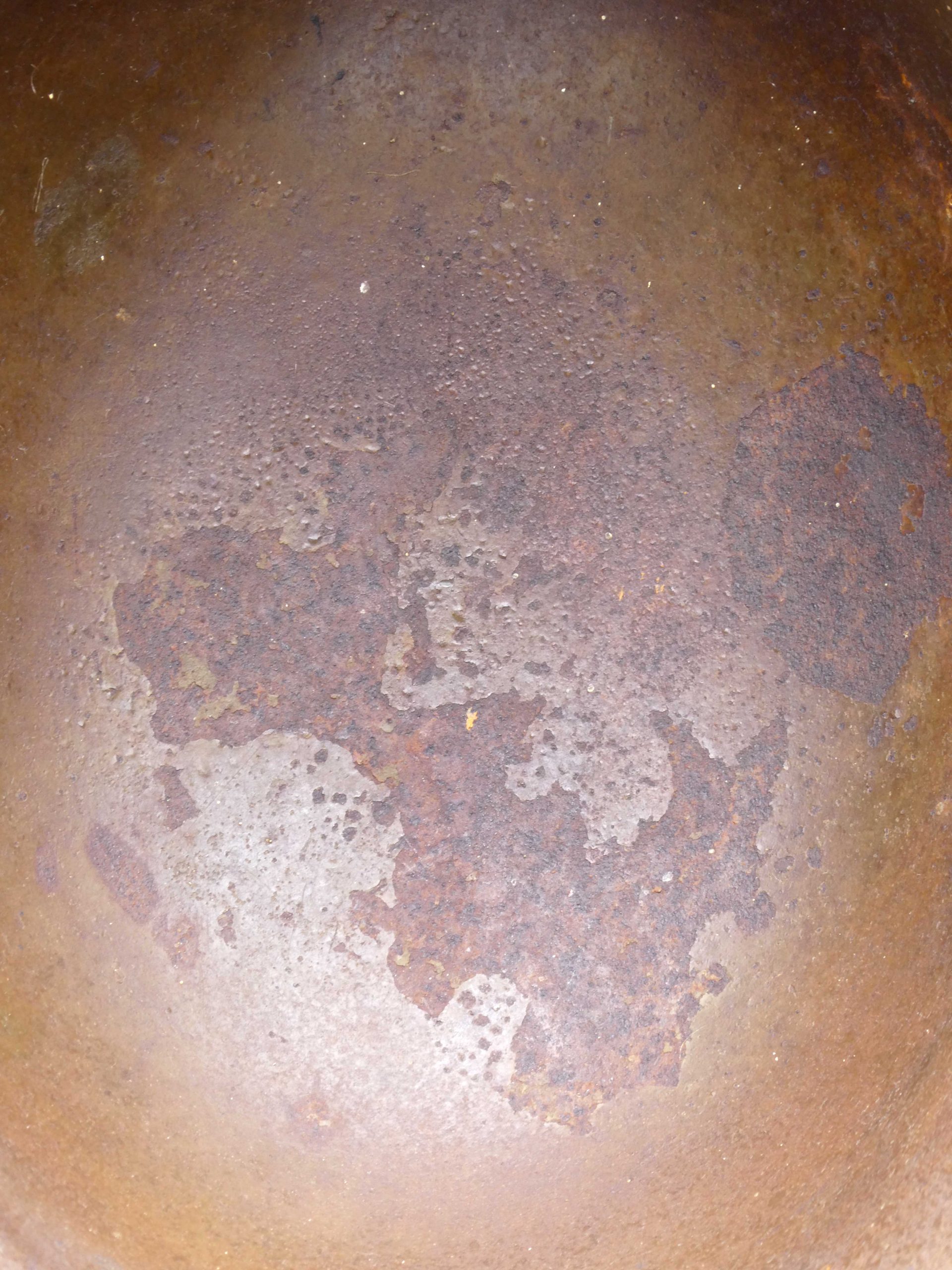
Stamp:
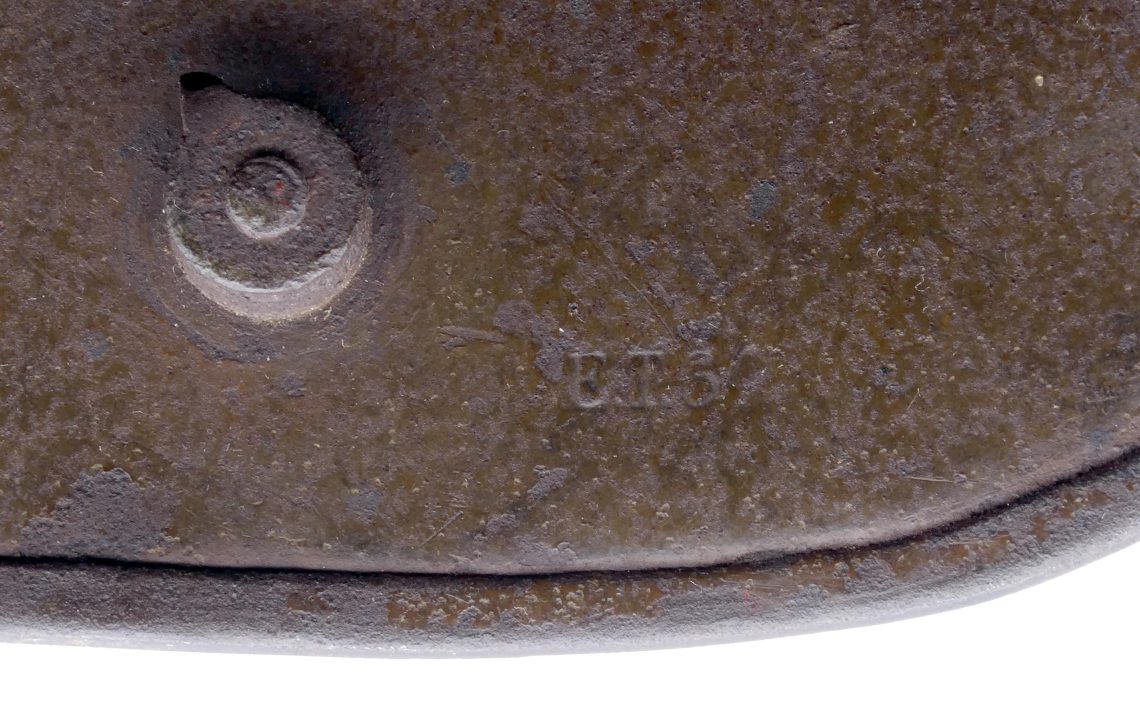
Stamp is likely “E.T. 64”, with 64 being the size based on the lugs. [2]
Paint:
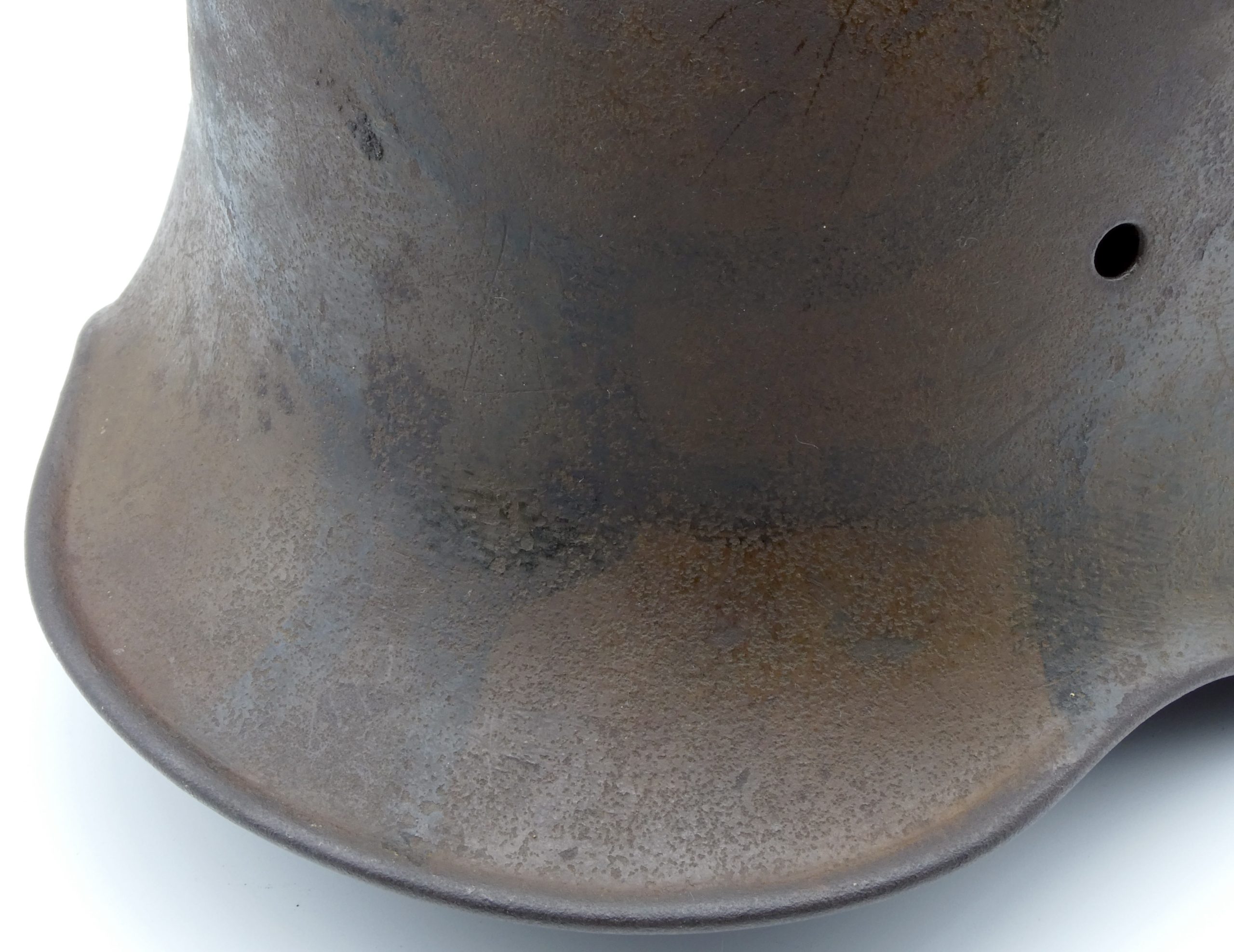
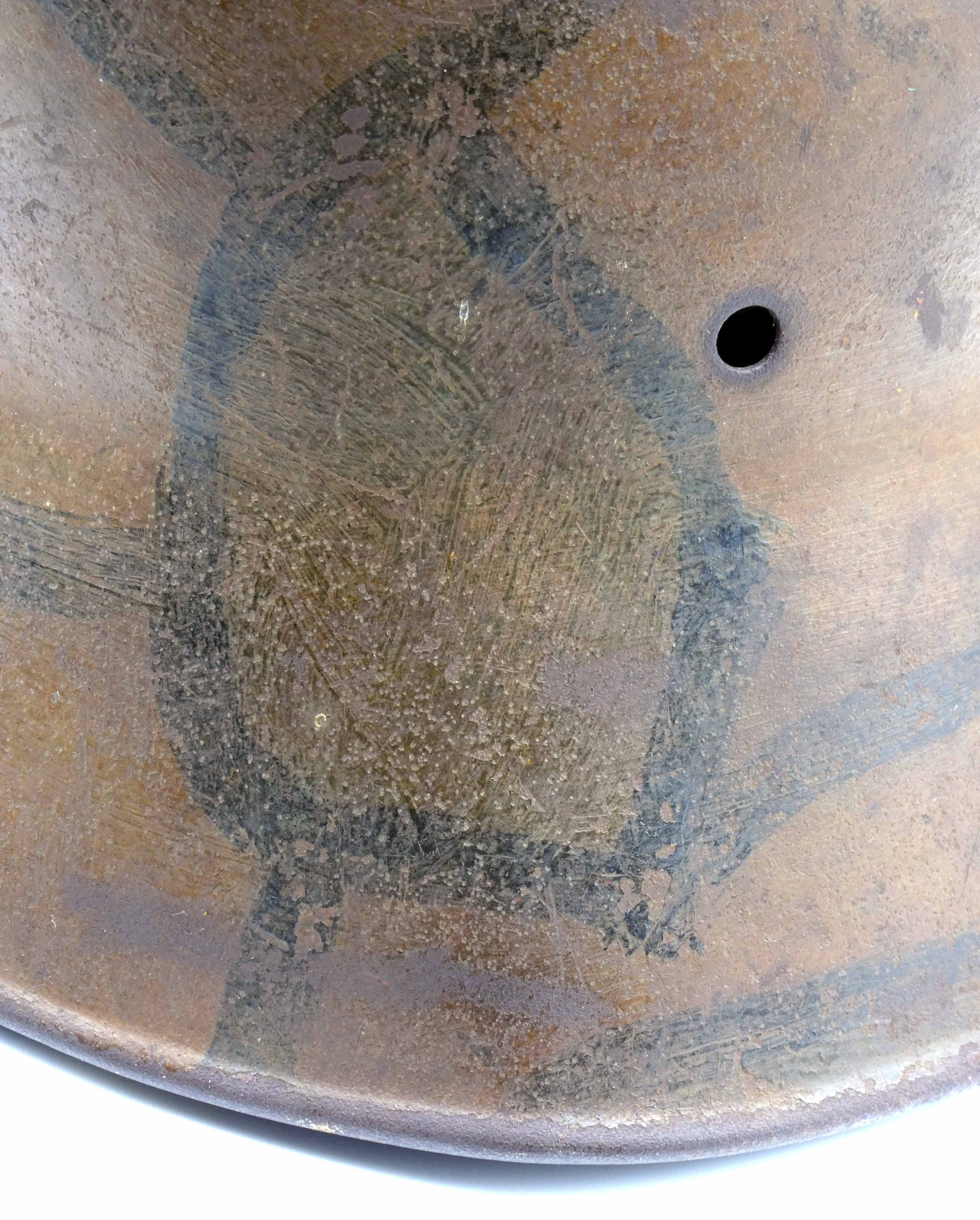
This style of camouflage paint, with different colors separated by a black border, was officially introduced on July 7, 1918 by Army Order II, No 91 366, signed by General Erich Ludendorff.[3][5]
Chief of the General Staff of the Field Army
II. No. 91 3667 July 1918
Through a purposeful, variegated surface paint on cannons, mortars, machine guns, steel helmets, etc., these devices may be much more easily hidden from view than before.
The authorized trials have produced the following results:1. Steel helmets:
A painted surface with one color (e.g. green or light brown) or with small splotches of a variety of colors is superior to a standard single color helmet, although it still allows the recognition of the characteristic form and silhouette.
In this regard, a three-colored surface which has had the borders blended, simulating a shadow effect is not recognizable beyond a distance of 60 meters.
Particulars regarding a useful surface: Dull colors – the helmet must not shine. Sprinkling the still-damp oil paint with fine sand stops the surface from glistening in the sun.
The choice of colors is to be purposely changed according to the time of year. One of the three colors must match the basic color found in the region of fighting.
Suitable at this time: green, yellow ochre, rust brown
Separation of the surface of the helmet into equal-sized portions, consisting of large, sharp-cornered patches.
Support – On the front side of the helmet, no more than four colored fields must be visible. Light and dark colors are to be placed next to each other. The colored segments are to be sharply separated from each other by a finger-wide black stripe.
Necessary coloring materials for 1000 helmets: 5 kilograms each of ochre, green and brown; 2 kilograms of black.
After ongoing scientific testing, I have requested the War Ministry to regulate the appropriate seasonal color scheme. Until that point, I request that painting be carried out in the above-mentioned manner.(signed) Ludendorff
Army Order II. No. 91 366, English translation reproduced from [5]
To:
all Army Groups (5 each)
all Army High Commands (20 each)
Inspector General of Artillery Schools
General of Pioneers attached to General Headquarters
Commanding General of the Air Forces
Army Mortar School
Commander of the Gas Troops
M.SS Command Rozoy
General Staff Course Sedan
Field Artillery and Foot Artillery Practice Grounds
Chief of Field Transportation
Offices la, Ic, B, Munitions. Z, P, F, Illb (3 each)
Usage Photos:
The few pictures that might contain camouflaged helmets are mostly from the last 4 months of World War I, after July 1918 when the order specifying helmet camouflage was signed. It is often difficult to determine if a camouflage helmet is in a picture due to the limitations of camera technology during WW1.
